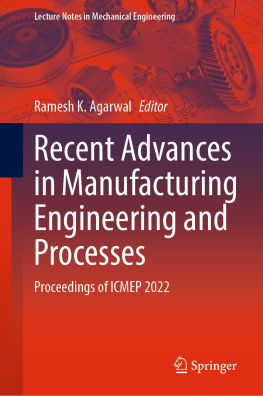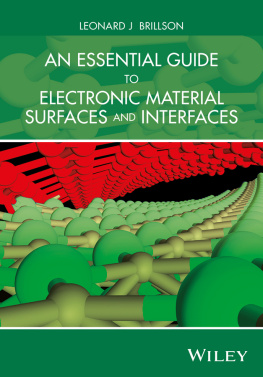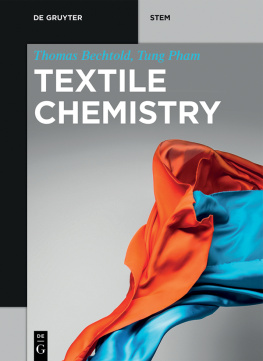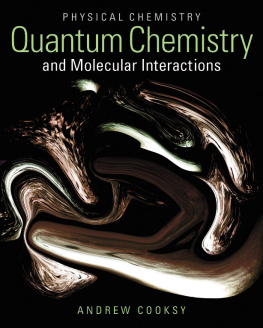Pizzini - Physical Chemistry of Semiconductor Materials and Processes
Here you can read online Pizzini - Physical Chemistry of Semiconductor Materials and Processes full text of the book (entire story) in english for free. Download pdf and epub, get meaning, cover and reviews about this ebook. year: 2015, publisher: John Wiley & Sons, Incorporated, genre: Romance novel. Description of the work, (preface) as well as reviews are available. Best literature library LitArk.com created for fans of good reading and offers a wide selection of genres:
Romance novel
Science fiction
Adventure
Detective
Science
History
Home and family
Prose
Art
Politics
Computer
Non-fiction
Religion
Business
Children
Humor
Choose a favorite category and find really read worthwhile books. Enjoy immersion in the world of imagination, feel the emotions of the characters or learn something new for yourself, make an fascinating discovery.
- Book:Physical Chemistry of Semiconductor Materials and Processes
- Author:
- Publisher:John Wiley & Sons, Incorporated
- Genre:
- Year:2015
- Rating:5 / 5
- Favourites:Add to favourites
- Your mark:
- 100
- 1
- 2
- 3
- 4
- 5
Physical Chemistry of Semiconductor Materials and Processes: summary, description and annotation
We offer to read an annotation, description, summary or preface (depends on what the author of the book "Physical Chemistry of Semiconductor Materials and Processes" wrote himself). If you haven't found the necessary information about the book — write in the comments, we will try to find it.
Pizzini: author's other books
Who wrote Physical Chemistry of Semiconductor Materials and Processes? Find out the surname, the name of the author of the book and a list of all author's works by series.
Physical Chemistry of Semiconductor Materials and Processes — read online for free the complete book (whole text) full work
Below is the text of the book, divided by pages. System saving the place of the last page read, allows you to conveniently read the book "Physical Chemistry of Semiconductor Materials and Processes" online for free, without having to search again every time where you left off. Put a bookmark, and you can go to the page where you finished reading at any time.
Font size:
Interval:
Bookmark:

This edition first published 2015
2015 John Wiley & Sons, Ltd
Registered office
John Wiley & Sons Ltd, The Atrium, Southern Gate, Chichester, West Sussex, PO19 8SQ, United Kingdom
For details of our global editorial offices, for customer services and for information about how to apply for permission to reuse the copyright material in this book please see our website at www.wiley.com.
The right of the author to be identified as the author of this work has been asserted in accordance with the Copyright, Designs and Patents Act 1988.
All rights reserved. No part of this publication may be reproduced, stored in a retrieval system, or transmitted, in any form or by any means, electronic, mechanical, photocopying, recording or otherwise, except as permitted by the UK Copyright, Designs and Patents Act 1988, without the prior permission of the publisher.
Wiley also publishes its books in a variety of electronic formats. Some content that appears in print may not be available in electronic books.
Designations used by companies to distinguish their products are often claimed as trademarks. All brand names and product names used in this book are trade names, service marks, trademarks or registered trademarks of their respective owners. The publisher is not associated with any product or vendor mentioned in this book.
Limit of Liability/Disclaimer of Warranty: While the publisher and author have used their best efforts in preparing this book, they make no representations or warranties with respect to the accuracy or completeness of the contents of this book and specifically disclaim any implied warranties of merchantability or fitness for a particular purpose. It is sold on the understanding that the publisher is not engaged in rendering professional services and neither the publisher nor the author shall be liable for damages arising herefrom. If professional advice or other expert assistance is required, the services of a competent professional should be sought
The advice and strategies contained herein may not be suitable for every situation. In view of ongoing research, equipment modifications, changes in governmental regulations, and the constant flow of information relating to the use of experimental reagents, equipment, and devices, the reader is urged to review and evaluate the information provided in the package insert or instructions for each chemical, piece of equipment, reagent, or device for, among other things, any changes in the instructions or indication of usage and for added warnings and precautions. The fact that an organization or Website is referred to in this work as a citation and/or a potential source of further information does not mean that the author or the publisher endorses the information the organization or Website may provide or recommendations it may make. Further, readers should be aware that Internet Websites listed in this work may have changed or disappeared between when this work was written and when it is read. No warranty may be created or extended by any promotional statements for this work. Neither the publisher nor the author shall be liable for any damages arising herefrom.
Library of Congress Cataloging-in-Publication Data applied for.
A catalogue record for this book is available from the British Library.
ISBN: 9781118514573
Sunt igitur solida ac sine inani corpora prima. Preaterea quoniam genities in rebus inanest, materiam circum solidam constare necessest, nec res ulla potest vera ratione probari corpore inane suo celare atque intus habere, si non, quod cohibet, solidum constare reliquas.
Lucretius (56-95 BEC) De rerum natura.
Physical chemistry today plays a critical role in our basic understanding, modelling, diagnostics and theoretical forecast of semiconductor materials' properties, albeit some of Lucretius's concepts remain alive, such as the concept of vacuum/vacancies (materia inane) in solid materials.
Their mechanical, electrical and optical properties depend not only on their structure and composition, but also on their defects and impurities content and on their deviations from stoichiometry, when compound semiconductors are considered. We have learned how to manage their properties by doping and defect engineering processes.
Physical chemistry is behind most of these processes and is crucial in the growth, purification and post-growth treatments of semiconductors, such as impurity gettering and passivation. In this respect, this book represents the first attempt to treat semiconductor materials and processes from a purely physico-chemical viewpoint.
This subject is treated at a tutorial level, for students and specialists having a background knowledge in solid-state physics. For this reason the book starts with some elementary thermodynamic concepts, then continues by dealing with issues concerning point and extended defects in elemental and compound semiconductors, having in mind the thermodynamics and kinetics at the base of their behaviour. The physico-chemical aspects of growth-and post-growth processes of semiconductor materials are the final issues considered, giving substantial attention to the majority of semiconductors of industrial interest, but also to semiconductor nanowires and thin film semiconductors for photovoltaic and optoelectronic applications.
This book is dedicated to Professor Giovanni (Nanni) Giacometti, Academician, who stimulated in me a strong interest for the physico-chemical aspects of material science when he was my teacher, and who became a colleague and a close friend in the subsequent years.
This book is dedicated also to the hundreds of masters and doctoral degree students whom I taught, while not having the time to write a book for them.
I express my gratitude to a number of friends and colleagues worldwide who have supported my work during the preparation of this book with advice and delivery of material. Among them, my particular gratitude goes to Stefan Estreicher, Ichiro Yonenaga, Koichi Kakimoto, Chris Van de Walle, Arthur Pelton, Andrew R. Barron, Peter Weinberger, Michael Stavola, Nicola Marzari, Sandro Scandolo, Annalisa Fasolino, Arul Kumar, Margit Zacharias, Gudrun Kissinger, Harmut Bracht, Leonid Zhigilei, Kai Tang, Yong Du, Biao Hu, Erik Mazur, Eugene Yakimov, Alexander Thorsten Blumenau, Otto Sankey, David Holec, Jonathan S. Barnard, Anrew Barron, Caterina Summonte, Naoki Fukata, Eike Weber, Giovanni Isella, Alessia Irrera, Tzanimir Arguirov, Pierre Ruterana, Wladek Walukiewicz, and to my former coworkers Simona Binetti and Maurizio Acciarri, as well as to my son Michele, his wife Elena, and Silvia Mazzon for their help in improving, when possible, the figures of this book.
Thermodynamics of Homogeneous and Heterogeneous Semiconductor Systems
Elemental and compound semiconductors represent a vast family of materials of strategic interest for a variety of mature and advanced applications in micro- and opto-electronics, solid state lighting (SSL), solid state physical and chemical sensors, high efficiency solar cells and nanodevices. The materials themselves have always been technology enablers and their role today is even more significant in view of the increasing demand for sustainable development applications and high temperature, high pressure technologies.
The semiconductors family includes elemental solids such as silicon, the material of choice for the microelectronic and photovoltaic industry, binary alloys such as the Si-Ge alloys used for their elevated carrier mobilities, and compound semiconductors, of which SiC is used for high power, high frequency devices and phosphides, arsenides and nitrides for the most advanced optoelectronic applications.
Next pageFont size:
Interval:
Bookmark:
Similar books «Physical Chemistry of Semiconductor Materials and Processes»
Look at similar books to Physical Chemistry of Semiconductor Materials and Processes. We have selected literature similar in name and meaning in the hope of providing readers with more options to find new, interesting, not yet read works.
Discussion, reviews of the book Physical Chemistry of Semiconductor Materials and Processes and just readers' own opinions. Leave your comments, write what you think about the work, its meaning or the main characters. Specify what exactly you liked and what you didn't like, and why you think so.






